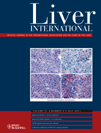Anti-ulcer agent teprenone inhibits hepatitis C virus replication: potential treatment for hepatitis C
Abstract
Background: Previously we reported that 3-hydroxy-3-methylglutaryl coenzyme A reductase inhibitors, statins, inhibited hepatitis C virus (HCV) RNA replication. Furthermore, recent reports revealed that the statins are associated with a reduced risk of hepatocellular carcinoma and lower portal pressure in patients with cirrhosis. The statins exhibited anti-HCV activity by inhibiting geranylgeranylation of host proteins essential for HCV RNA replication. Geranylgeranyl pyrophosphate (GGPP) is a substrate for geranylgeranyltransferase. Therefore, we examined the potential of geranyl compounds with chemical structures similar to those of GGPP to inhibit HCV RNA replication.
Methods: We tested geranyl compounds [geranylgeraniol, geranylgeranoic acid, vitamin K2 and teprenone (Selbex)] for their effects on HCV RNA replication using genome-length HCV RNA-replicating cells (the OR6 assay system) and a JFH-1 infection cell culture system. Teprenone is the major component of the anti-ulcer agent, Selbex. We also examined the anti-HCV activities of the geranyl compounds in combination with interferon (IFN)-α or statins.
Results: Among the geranyl compounds tested, only teprenone exhibited anti-HCV activity at a clinically achievable concentration. However, other anti-ulcer agents tested had no inhibitory effect on HCV RNA replication. The combination of teprenone and IFN-α exhibited a strong inhibitory effect on HCV RNA replication. Although teprenone alone did not inhibit geranylgeranylation, surprisingly, statins' inhibitory action against geranylgeranylation was enhanced by cotreatment with teprenone.
Conclusions: The anti-ulcer agent teprenone inhibited HCV RNA replication and enhanced statins' inhibitory action against geranylgeranylation. This newly discovered function of teprenone may improve the treatment of HCV-associated liver diseases as an adjuvant to statins.




